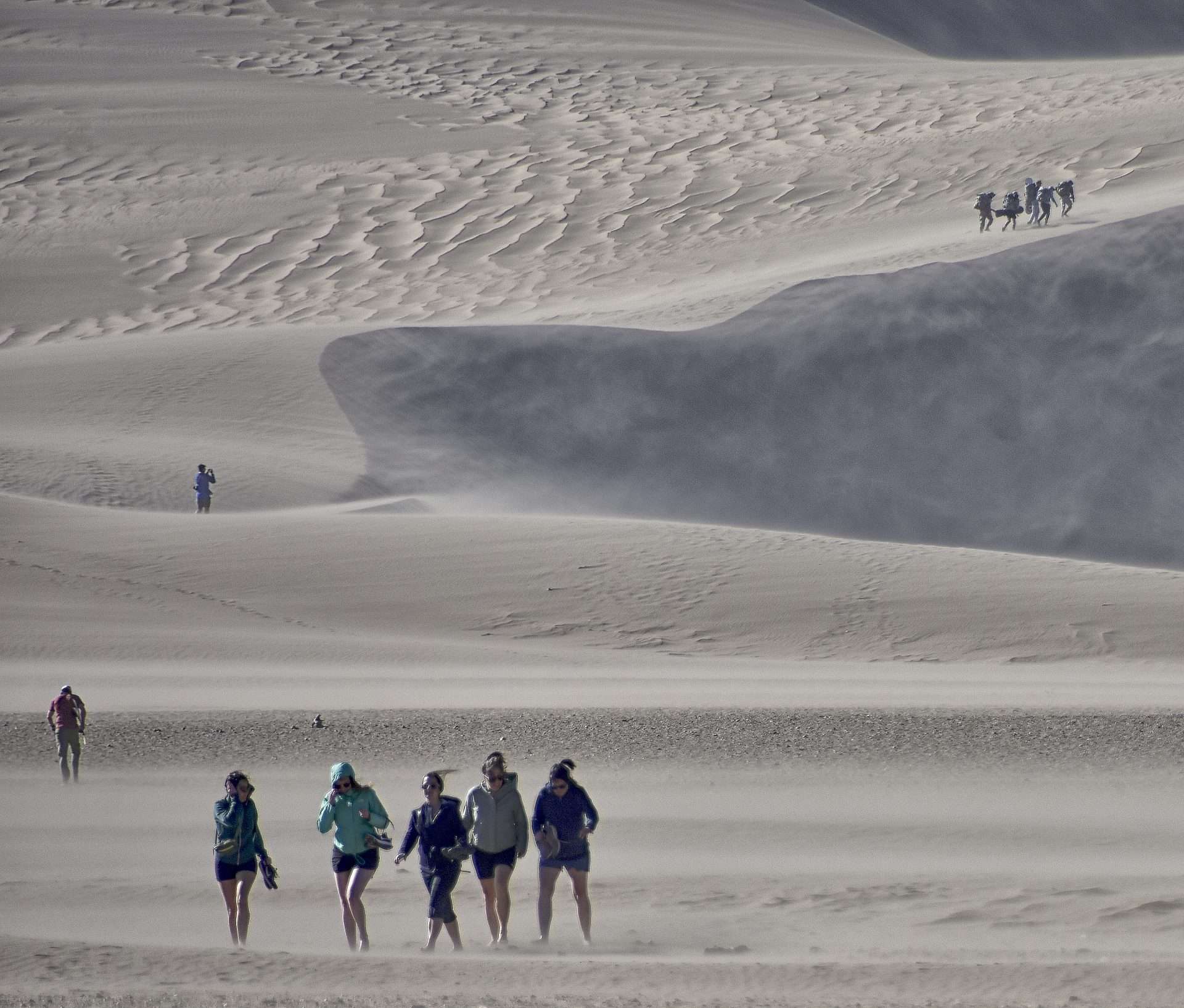By Kaitlyn Fletcher, SLVEC
Nestled between the Sangre de Cristo and San Juan mountain ranges, the San Luis Valley is the largest alpine basin in the world, extending 125 miles from Poncha Pass to the Taos Plateau. This 8,000-square-mile area is home to an abundance of fragile ecosystems.
With over 3.1 million acres of public lands, the valley needed an organization dedicated to advocating for these landscapes. This sparked the creation of the San Luis Valley Ecosystem Council. In June 2000, Christine Canaly signed on as the director of the new nonprofit.
“I had the opportunity to represent equity on the landscape,” Canaly said. “Public lands support individuals and communities to feel a sense of place—be part of a landscape larger than themselves.”
Now, over 25 years later, Canaly has been awarded for her contributions as a fearless advocate for the valley landscape and beyond. She received congressional recognition for her efforts to mobilize key local and regional constituencies to support the Great Sand Dunes National Park and Preserve Act.
Canaly’s milestone aligns with the 25th anniversary of the Great Sand Dunes National Park and Preserve Act and the establishment of the BLM National Conservation Lands System.
The Great Sand Dunes National Park and Preserve was protected in perpetuity on Nov. 22, 2000, marking the culmination of nearly a century of conservation efforts. The dunes attracted private industries interested in the sand for cement and glass fabrication. Locals campaigned to preserve this natural wonder from ruin, with success. It became a national monument in 1932.
In 1976, the Great Sand Dunes Wilderness Area was designated within the monument by the U.S. Congress. This fragile landscape is the only saltbush-greasewood ecosystem protected as wilderness in the nation. It includes the entire dunefield and adjoins the Sangre de Cristo Wilderness. The Great Sand Dunes host over 500,000 annual visitors from around the world.
Beyond the national park and preserve, the valley’s public lands are managed by numerous federal and state agencies. The Rio Grande National Forest, managed by the U.S. Forest Service, accounts for the largest area at 1.8 million acres, followed by 500,000 acres managed by the Bureau of Land Management. There are three National Wildlife Refuges protected by the U.S. Fish and Wildlife Service. State lands are also sprinkled throughout the Valley.
“These are unprecedented times regarding the privatization of public assets,” Canaly said. “Public lands were bestowed upon all Americans by forward-thinking leadership and shaped our nation’s relationship to the landscape.”
In 2025, after 25 years, SLVEC remains the only local public lands advocacy organization in the region. Here are some more highlights:
- Rallied the resistance to oil and gas for over a decade, with no new developments in the Valley for nearly 20 years
- Meticulously involved in land management plans that set the foundation for public land protections, including, but not limited to, BLM, USFWS, and USFS
- Served as an active board member for the Sangre de Cristo Heritage Area to advocate for holistic landscape management that bridged federal and state agencies
- Continued to stop the Wolf Creek Development in collaboration with other public and nonprofit stakeholders
- Supported environmental health and monitoring across the valley through air and water quality samples, radioactive and solid waste diversions, and educational resources
- Advocated for protection in the Rio Grande watershed through the Rio Grande Natural Area legislation and educational outreach around the benefits of a National Conservation Area
Under BLM, the National Conservation Land System comprises 906 separate units that cover over 38 million acres, conserving special features on the landscape since 2000. These are divided into five different designations: national monuments, national conservation areas, scenic and historic trails, wilderness areas, and wild and scenic rivers.
The San Luis Hills, Rio Grande Natural Area, and Old Spanish Trail are local examples of these cherished public lands.
“This public ownership is now seen as a barrier to the self-interest of private industries that want to extract our resources,” Canaly continued. “We need to stand up for our American legacy of public lands.”
Join our celebration on Saturday, November 8, at the Dune Valley Distillery in Mosca! We will honor the 25th anniversary of the Great Sand Dunes Park and Preserve Act, the creation of the National Conservation Lands System, and the leadership of our dedicated director, Christine Canaly.
Please reach out to Kaitlyn Fletcher at communications@slvec.org for extra registration support. More information at: https://bit.ly/our-trifecta-celebration

